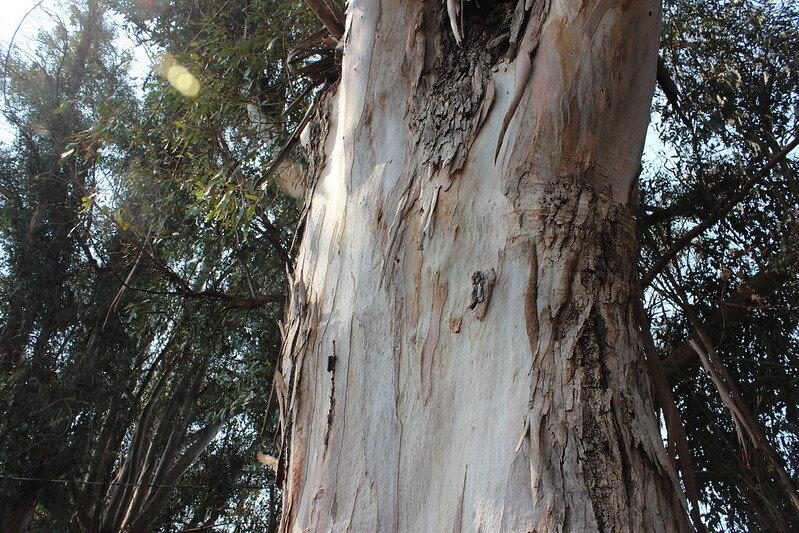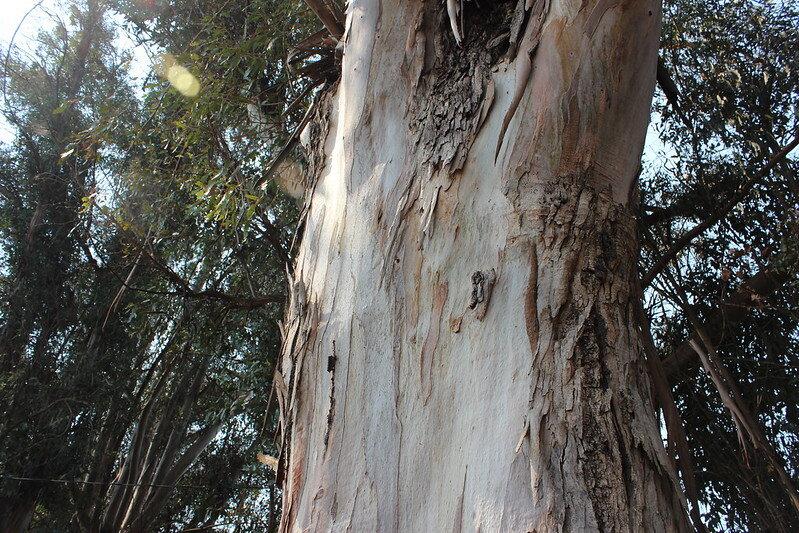Sonoma State University is removing 205 trees from campus grounds that border E. Cotati Ave. and Petaluma Hill Rd. Work began Monday, Aug. 31 to eradicate the non-native stands of 50-year-old, towering blue gum eucalyptus.
According to Robert Eyler, SSU’s interim public information officer, “The eucalyptus removal is being undertaken to increase defensible space on campus and in neighboring communities. The trees produce substantial amounts of highly-flammable leaf litter and they are adjacent to potential ignition sources on the roadways.”
To fund the eradication, the university requested and received a hazard mitigation grant for a fuels reduction project through the Federal Emergency Management Agency in 2018.
SSU received a California Environmental Quality Act exemption because the “project constitutes fuel management activities within 30-100 feet of structures..it is intended to reduce the volume of flammable vegetation and will not result in the removal of healthy, mature, scenic trees other than for forestry purposes, nor result in the taking of endangered, rare, or threatened plant or animal species or significant erosion or sedimentation of surface waters.”
Students expressed specific concern about how the eradication would be performed. The customary commercial method is to use chemicals such as Garlon or glyphosate to kill the roots, but in light of SSU’s recent glyphosate ban, Eyler says the university will be using solely mechanical methods.
The eucalyptus trees at SSU were planted in 1970, four years after the campus opened its doors, and photographs hanging in the Salazar building document the site before the trees existed.
Several students opposed the removal, and a petition was launched on change.org. As of Aug. 31, 267 people have signed the request to halt the plan.
In response to questions and concerns from the campus community, Vice President of Administration and Finance Joyce Lopes wrote in an email announcement, “Since we know the importance trees play in our ecosystem, we plan to replant new trees across campus in the coming months…when replacing trees, we pay special attention to planting…California native species.”
Eucalyptus is ubiquitous in California, and at one time there were approximately 600,000 acres across the state. Early settlers believed the timber and botanical products would be valuable, and stands were planted for windbreaks, shade, and greenery.
Over time, the plant proved to be a poor choice for economic production, and government agencies now view the plant as a threat to the state instead of a commercial crop. Environmental concerns include the complex system of shallow roots, greedy resource consumption, and high degree of fire danger.
While eucalyptus was imported from Australia to California in 1853, the bacteria that decomposes eucalyptus leaf debris did not accompany the trees in sufficient numbers to handle the amount of leaf litter in the state. This results in a thick floor of dry material that competes with native species and contributes to wildfire concerns.
Eucalyptus leaf litter is a source of fuel, and the California Invasive Plant Council notes that “because stringy bark is carried away while burning, eucalyptus forests are considered the worst in the world for spreading spot fires.”
The CIPC lists eucalyptus as an invasive species due to the plant’s “effects on fire danger, native plants, and wildlife,” in addition to the copious amounts of groundwater the trees consume.
A joint study by UC Berkeley and Tulane University found that eucalyptus affects the body condition and skin microbiota of native salamanders, and evidence suggests that more research is needed to understand how invasive species impact native wildlife.
This is not the first time the eucalyptus trees on campus have drawn attention. As reported by Dr. Rick Luttmann, professor emeritus and former chair of the Academic Senate, safety issues posed by the trees were used by high-ranking administration officials to compel action in dramatic presentations to the Campus Planning Committee in the 2001-02 academic year, and the university successfully urged the county to remove free parking areas adjacent to campus on the grounds of public safety.
Critics claim this maneuver was designed to increase revenues by forcing students and visitors to pay for parking permits or daypasses, while proponents argue that the trees and road conditions presented safety hazards that required parking access be removed.
Eyler says, “The County of Sonoma, not the university, made the decision…the critical factor was safety from passing cars…the areas are not paved and there are no sidewalks to allow safe access from the parked cars to campus.”





![[Both photos courtesy of sonoma.edu]
Ming-Ting Mike Lee stepped in as the new SSU president following Sakakis resignation in July 2022](https://sonomastatestar.com/wp-content/uploads/2024/04/CC4520AB-22A7-41B2-9F6F-2A2D5F76A28C-1200x1200.jpeg)



























